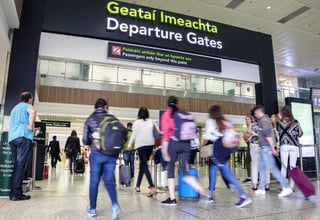
Aviation industry group the International Air Transport Association (IATA) is focusing on air passenger safety – and how airlines can lead the way – at its 2022 Safety Conference, currently underway in Dubai.
“Safety begins at the top. Aviation executives need to demonstrate safety leadership and a strong commitment to a positive safety culture and then ensure that vision is conveyed across the entire organisation. This is critical to ensuring continued high levels of safety as the industry emerges from the turbulence and disruption of the last two years and demand for air travel accelerates,” said Nick Careen, IATA’s Senior Vice President, Operations, Safety and Security.

IATA has developed a Safety Leadership Charter in consultation with IATA members, and the wider aviation community, to support executives in growing a positive safety culture within their organisations that enhances safety performance and operational resilience.
Also high on the agenda at the Safety Conference is the evolution of the IATA Operational Safety Audit (IOSA) towards a risk-based model under which audits will be tailored to each airline’s risk profile.
IOSA is a requirement for membership in IATA and safety data confirm that in aggregate, airlines on the IOSA registry have a lower accident rate than airlines that are not on the IOSA registry.
In 2021, the all-accident rate for airlines on the IOSA registry was more than six times better than the rate for non-IOSA airlines.
As industry safety levels improve, however, future reductions in the accident rate increasingly will rely on an adaptive, risk- and data-driven approach. Concurrently, in order to be relevant to safety improvements, airlines need IOSA to align with the specific risk factors of their operations.
“IOSA is recognised as the gold standard for airline operational safety. Today, however, we have access to significantly more operational data than we did when IOSA was created nearly 20 years ago, enabling it to be even more effective. Focusing on pertinent safety risks while maintaining a baseline of safety, will contribute to raising the safety bar even higher,” said Mr Careen.




